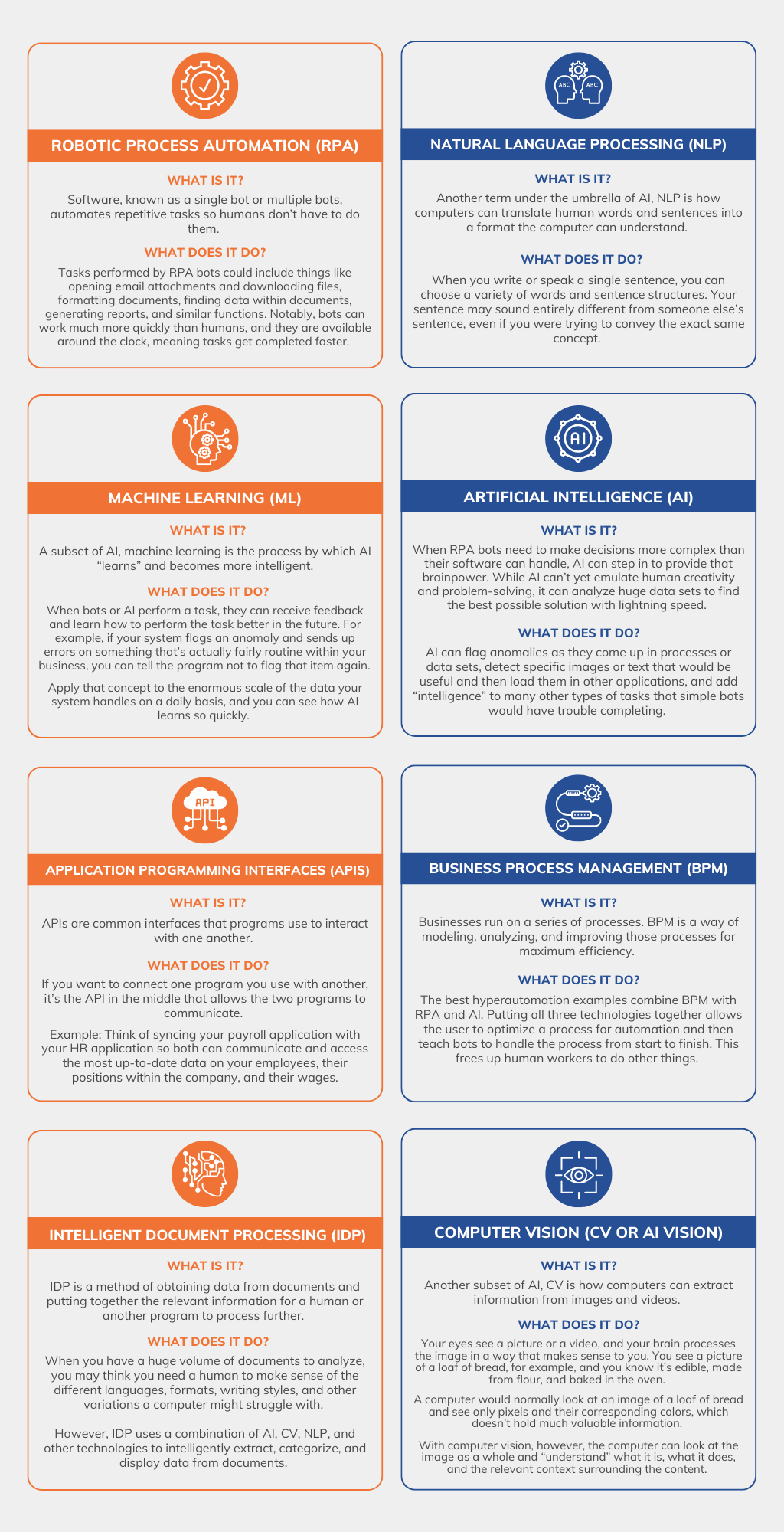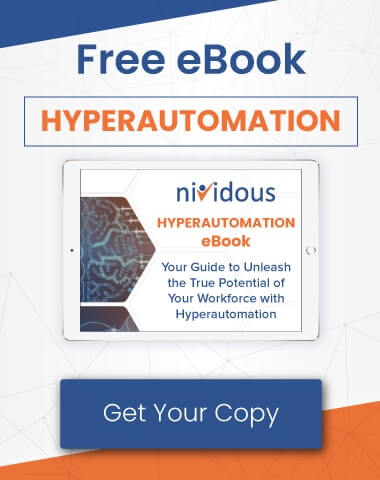When most people think of automation, they think about computer programs handling repetitive, tedious tasks. Letting a “bot” examine your company’s incoming emails and open relevant attachments, for example, can save several minutes every day for an employee who would otherwise have to manually open those messages and search for the information they need.
But that type of simple automation is only the tip of the iceberg when it comes to streamlining business operations and saving substantial amounts of time.
By combining multiple technologies, businesses can automate numerous aspects of complex processes from start to finish, allowing human employees to focus on other things entirely. Imagine your employees working side-by-side with AI-driven bots that function more like intelligent coworkers than simple automation scripts.
This concept isn’t a vague, hopeful idea for the future; it’s called hyperautomation, and it’s something you can implement in your business today.
What technologies are really driving hyperautomation in 2022?
The portfolio of technologies that are considered part of hyperautomation include:
- Robotic Process Automation (RPA)
- Business process Management (BPM)
- Application Programming Interfaces (APIs)
- Intelligent Document Procession (IDP)
- Artificial Intelligence (AI)
- Several technologies under the umbrella of AI, including Machine Learning (ML), Computer Vision (CV), Natural Language Processing (NLP)
We’ll cover these technologies in more depth later.
RPA, BPM, and AI currently play the largest roles in hyperautomation, but the real driving factor today is AI.
Why? Because each iteration of improvement in AI makes it possible for more things to be automated with less human interaction. The ROI for hyperautomation solutions is dependent upon reducing the amount of human involvement in a process.
Of course, integrating AI into a process always requires some degree of exception management—the need for humans to handle errors associated with complex or unusual situations. When analyzing documents using IDP, for example, an AI program might raise an exception if it encounters a new document type with an unfamiliar layout, to alert human employees to take a look and perhaps complete the task on their own.
Additionally, for every new document type, a human must usually create a template for the AI program to be able to understand the data inside. This template doesn’t take long to make, but it’s still a tedious, manual task that soaks up precious time employees could be spending elsewhere.
Humans will always be involved in helping to manage exceptions, but to whatever extent you can reduce the exceptions, you reduce human involvement. Most companies right now in this space (including Nividous) are spending the majority of their R&D efforts on enhancing and refining the way their AI works, all with the goal of making it more accessible for people to use it in more ways—without having to become AI experts to do it.
For example, at Nividous, we’ve improved our machine learning models to the point where a template created by humans is no longer required in many cases. That means our IDP application can be used straight out of the box to digitize paper documents for many document types, for instance, capturing important information that can be used to automate an entire accounts payable process.
Each improvement in an AI platform allows AI-assisted programs to handle more complex tasks without requiring human intervention.
Better still, improving AI makes the technology accessible to more people and useful in a wider variety of applications. Companies that might have steered clear of AI because they lack an IT expert can more easily use an intelligent, streamlined AI platform that doesn’t require the same level of human assistance. The technology isn’t completely “plug and play” quite yet, but every iterative improvement brings us closer to that goal.
Hyperautomation Technologies + Examples
While you can accomplish a lot with Artificial Intelligence, Business Process Management Systems, and other platforms separately, the real power comes from combining them into one system that works together as a unit. The technologies that underlie the Nividous hyperautomation platform include:
Although all these technologies are required to develop the sophisticated automation processes that businesses need, there’s no reason for you to try to piece together an AI algorithm here, an RPA solution there, and an IDP platform that will play nicely with both. Nividous combines these technologies (and more) into an easy-to-use hyperautomation platform that you can implement quickly—without any data scientists or expensive third-party components.
Hyperautomate your business processes with Nividous.
Get started with a personalized, free demo.





![The Path Forward for Intelligent Automation [2024 Trends] Blog Feature](https://nividous.com/wp-content/uploads/2024/05/The-Path-Forward-for-Intelligent-Automation-blog-feature-1.webp)
